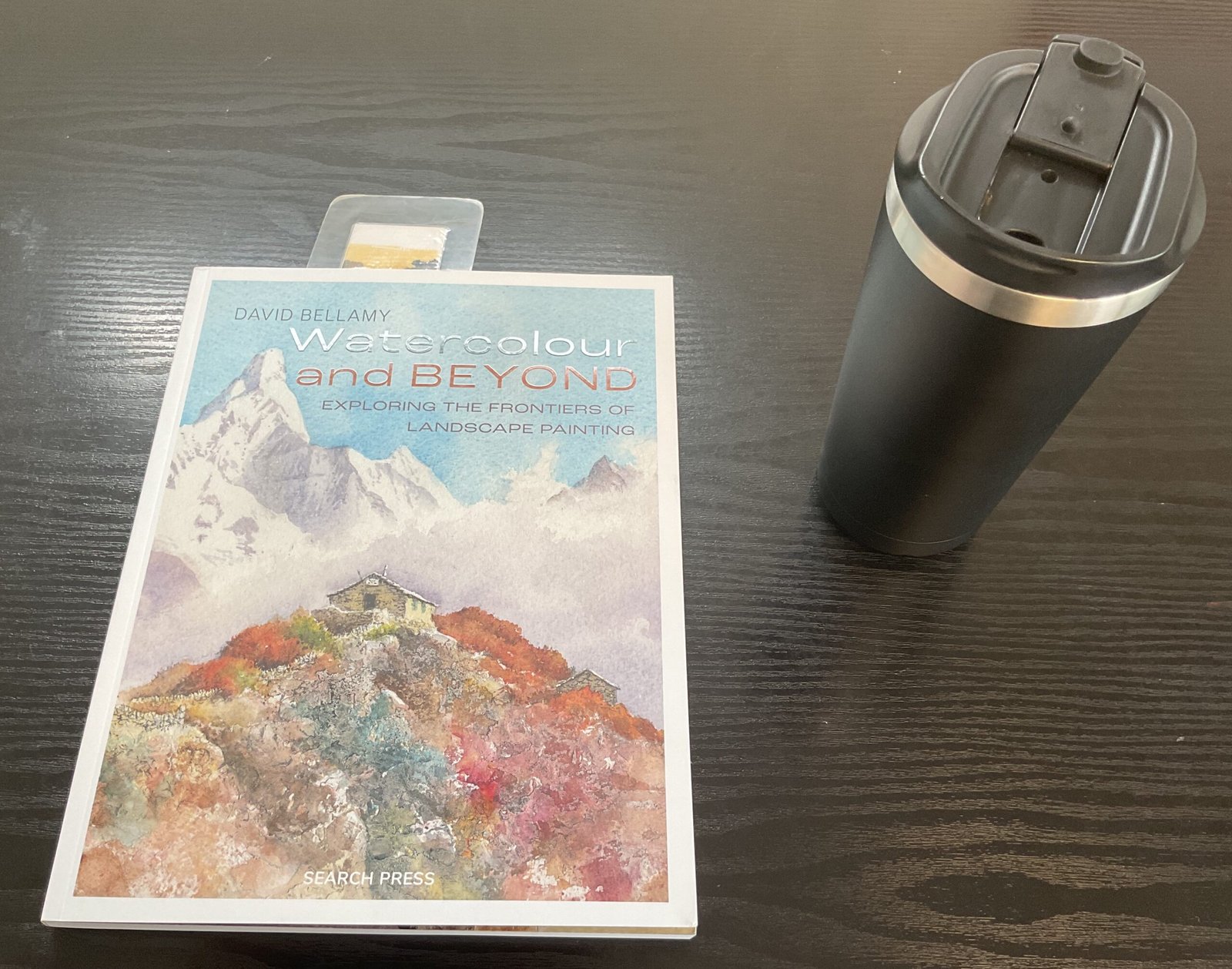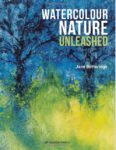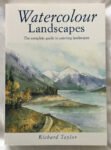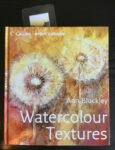This book keeps popping up on my Amazon recommendations. When I took a look inside,…

Watercolour And Beyond, David Bellamy – Book Review
And here’s the first of my birthday books to be reviewed. It’s a 160 page paperback. It arrived on Monday and took me five evenings to read, probably because it was so tightly packed, meaning I had to take a few breaks, being unable to take in too much information in a single sitting. It’s by David Bellamy, a really good watercolour author, and seems to be a change in direction. Based on his Complete Guide To Landscapes, I had David pinned down as quite a conventional artist but he’s sounding far more adventurous and experimental in this book.
Chapter-wise, after the usual introductory pleasantries, we have:
- about 30 pages on basic techniques
- about 80 pages on experimental techniques
- about 25 pages on creative interpretations and on rescuing disasters
- about 10 pages on “beyond wall art”
Those first thirty pages are pretty basic at first sight but do include plenty of interesting tips. And the text (throughout the book, not just this chapter) is regularly broken up with examples of David’s paintings with brief notes on how he created them. The brief notes turn these paintings into visual tips rather than just sources of information. These thirty pages are not to be skipped.
Then we get to the meat of the book with the eighty pages on experimental techniques. Just looking at the contents page, this covers a mixture of composition, mark making and material ideas: new approaches (both materials and mark making), composition, light & space, painting water, gouache, including figures, masking fluid, creating texture visually and creating texture physically. It’s an intriguing list and I particularly like how David has divided up texture into visual and physical. The list (and, in particular, the experimental ideas on it) reminds me of books by other authors and, in particular of Ann Blockley and Jean Betteridge. These three authors have different styles that will appeal to artists at different stages of their development. All three present the reader with ideas about using new materials. But Jean includes lots of step by step demonstrations. David doesn’t give demos but shows completed paintings with commentary and includes a lot of tips. Ann doesn’t give such detailed demos (apart from in the watercolour Workshop book) and gives fewer tips: her biggest teaching weapon is inspiration and her paintings are more experimental and abstract than David’s or Jean’s.
Then we get a 25 page chapter on creative interpretations and rescuing disasters. I’m not gonna lie here: I think this is really two separate chapters. We have about 20 pages on creativity that feels like it belongs in the previous chapter. Or maybe there could be an extra chapter made up of these 20 pages and the bits from the previous chapter on light & space and including people. Because they’re all about creating atmosphere and stories. About all the planning that needs to take place before starting the painting rather than the techniques to use during the painting stage. Actually, just looking again, these 20 pages include some techniques as well, so maybe it would have worked best within a huge 100 page chapter.
Then the 25 page chapter concludes with about ten pages on rescuing disasters. Yes, I know 20+10 is 30, not 25. We’re actually talking 18+8=26 and I’m doing some rounding. Anyway, there are enough ideas on these 8 pages to make them worthy of inclusion but I can’t help thinking it would have been great to see those 8 pages expended to 30 (or whatever) with even more ideas.
And finally we have ten pages on “beyond wall art”, putting the case for solving out art storage problems by getting us to paint in sketchbooks, create scrapbook diaries or just recreate historical scenes in paintings and donate them to museums. This chapter didn’t do much for me.
One other thing worth mentioning is that David has become more adventurous in his choice of colours, now using lots of Daniel Smith Primatek colours and supreme granulating colours like lunar blue and lunar black. These all look great. A little bit of research on my part reveals lunar black to be the same pigment as Winsor & Newton’s Mars black, a colour that’s included in the Shire grey and desert grey Schmincke supergranulators, and lunar blue to be a mixture of Mars black and Winsor blue (green shade). If I ever decide to try out these colours, Mars black might be an alternative to potters’ pink as a granulation-creating mixer. And I could create lunar blue from Mars black and Winsor blue (GS). But maybe I could start using a bit of desert grey or Shire grey together with my regular palette. Let me think about that one.
So, to summarise, this is a book on experimental techniques, covering compositional planning, mark making and crazy materials. Compared to other books on these subjects, it’s heavy on tips and doesn’t have any detailed knitting pattern style demonstrations. It’s also sprinkled with examples of David’s work with commentary that provides extra tips and inspiration.
Overall, I rate this as a very good book. There are plenty of ideas in here that I may well adopt in my painting. But will it result in a step change in the quality of my painting? Probably not. I’m a better artist for reading this book but not a MUCH better artist. So this one isn’t a glactico but is easily good enough to get four palettes here and five palettes on Amazon. Great job Mr Bellamy.
🎨🎨🎨🎨
You can find this book and more reviews of it at Amazon UK here. As an Amazon Associate, I earn commission from qualifying purchases but this costs absolutely nothing extra to you.








Leave a Reply